|
PhD student Jamie Bucholz's poster took first place at the 2021 Freshwater Mollusk Conservation Society annual meeting!! Woot. Check it out over on mussels page.
Update, Jamie got a nice plaque. So continuing to play with our nanopore/illumina data in the search for a better reference genome for our target bumble bee taxa. Focusing on B. vosnesenskii here, I did a quick and dirty hybrid assembly that included ~30X Oxford Nanopore minion sequencing from 2 males from the same population, combined with ~100X HiSeq data from one of the same males. The assembly was done with the software MaSuRCA, which I gave ~300Gb RAM and 16 threads of computing power on the cluster, producing an assembly in roughly 3 days. So I'm playing with the data now (I'll probably add to this post as I get some other interesting results), but I just did some interesting exploratory analyses of synteny between my assembly and the two published bumble bees (B. impatiens, which is very scaffoldy, and B. terrestris, which has pretty good chromosome/linkage-group level assembly). I took one of my longer draft scaffolds for B. vosnesenskii and tried to see where it fit relative to other Bombus genomes using MAUVE. It appears that synteny is fully conserved for this ~4Mb chunk of genome (see top image), as expected for bumble bee genomes, but there are a few catches. First, this scaffold clearly belongs to the B. terrestris LG B10, which is ~13Mb in size. So clearly the minion+illumina data was't quite good enough to recover the whole chromosome. However, it does much better than the B. impatiens genome. In order to match up my scaffold, I had to stitch together 3 shorter B. impatiens scaffolds (see bottom image). This result looks like it might hold over the rest of the genome, given the distributions of scaffold lengths. So overall the hybrid assembly approach does a pretty darn good job, somewhere in between B. terrestris with its linkage group level assembly and B. impatiens with its 5000-odd scaffolds, without any mate-pair libraries etc. The grand total here = roughly $1,500 and a few days of work (plus the assistance of the Fierst and McKain labs, who got the instrument in the first place!). Of course, it will be much more work to annotate and stitch together the rest of the genome, but that's for a new grad student to work on! One additional thing we are seeing is that there can be a decent amount of contamination in the assembly, which is not necessarily surprising as we had to squish whole bees (including abdomens) to get enough DNA for the Nanopore runs. Numerous scaffolds stemm from bacteria, etc (most actually seem to be known bee symbionts or otherwise bee-associated, so these might be fun to look at downstream). We are playing around with some filtering applications but I think we've settled on the tool "BlobTools". This set of tools lets you map your raw reads (both Nanopore and Illumina) to the reference assembly, generate a BLAST database, and identify the origins of the contaminating sequences relatively quickly. You can then filter out anything you don't like using a combination of coverage, GC content, and taxonomy and redo your assembly. Just to visualize the effectiveness of cleaning the data you can compare a before and after plot (this is nanopore data). Pretty neat. One thing that's nice is that you can clearly see the big scaffolds in the center of the plot are nice and bee-y. Now to redo the assembly.
The lab threw me a surprise b-day party yesterday at lab meeting, and made me a cake. A bumble-log! All made with bee themed ingredients like almonds, honey, and bee pollinated berries. They also made me a cool personalized calendar with pictures of our field sites! Very nice! Thanks guys!
Zach Gompert (Utah State) visited UA for the Biological Sciences departmental seminar series last Friday. He gave an excellent, chock-full-o-facts seminar on revealing the genomic consequences of hybridization among species, focusing on his research in Lycaeides butterflies (e.g., this paper). The Lozierlab was excited to spend some time with one of the more productive population geneticists out there, and I think we were all motivated by the visit!
The Lozier and Dillon Labs and our research into local adaptation across montane landscapes will be well represented at the upcoming Society of Integrative and Comparative Biology meeting in New Orleans this January!
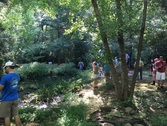 UA Arboretum attracts a crowd at the 2016 Open House UA Arboretum attracts a crowd at the 2016 Open House We are getting ready to undertake a local bee biodiversity inventory at the University of Alabama Arboretum, a beautiful spot off of campus that is undergoing continual improvement thanks to director Monica Watkins. As part of this improvement, we hope to get a baseline assessment of bee biodiversity across the Arboretum, which includes pine and oak/hickory forest, a community garden, wildflower garden, and open areas with lots of general floral and habitat resources that should be great for bees. Ideally, bee habitat availability will increase at the Arboretum over time, and we would like to see how diversity tracks improvements.
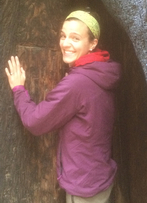 The following is a writeup by Kennan Oyen, a UWY grad student working with collaborator Michael Dillon and describes some of our integrative aspects of the NSF Mountain Bees project. I’m Kennan Oyen, A Ph.D. student in Dr. Michael Dillon’s lab. The Dillon Lab has been busy this summer! Our collaborator Jamie Strange from Utah State and USDA, along with his students, collected wild bumble bee queens (Bombus vosnesenskii) this spring and nested them in the lab. In May, we received our first batch of hives reared from wild queens collected in Southern California. With a team of undergraduates and a high school student I have been studying how these bees cope with extreme temperatures. 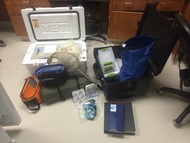 We recently wrapped up our first forray into the field for the 2016 season, travelling out west from Alabama to Washington, Oregon, and California. For those interested in what it takes to do bumble bee field work, this picture more or less sums things up. Nets, vials, coolers for storing ice and dry ice to preserve specimens, cooking gear, tents, sleeping bags, and you should be good to go! All this gear does make flying tricky, and since we need a vehicle when we get out west anyway, we usually just drive. Jason and I have driven back and forth across the country together about 4 times now.
A nice article about our NSF research by Chris Bryant (photos by Zach Riggins) at UA Press: “The Bees...I Just Quite Like Them”
A nice article in the Tuscaloosa News by Ed Enoch (with great photos by Karley Fernandez) "University of Alabama part of study on bumblebees' genetics, adaptability" features lab undergraduate researcher Gaybe Unbehaun! |
Lozier Lab NewsDispatches from the lab and field! Archives
March 2023
Categories
All
|
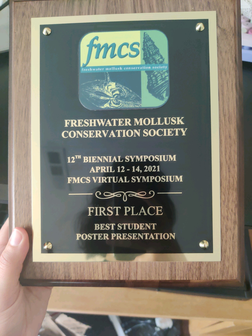


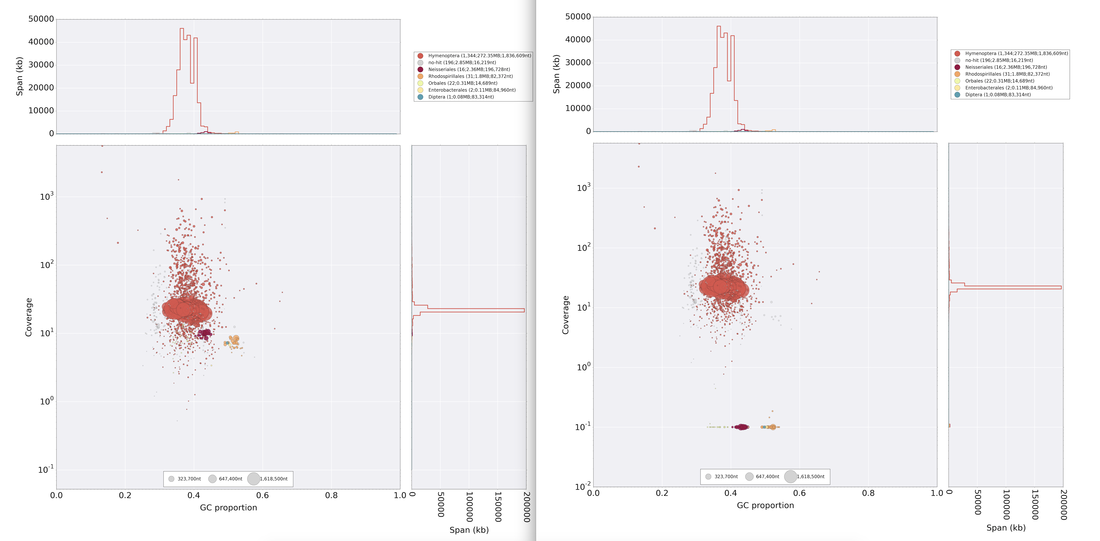
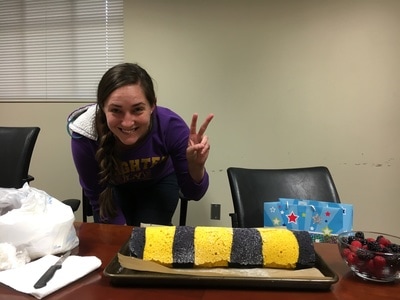


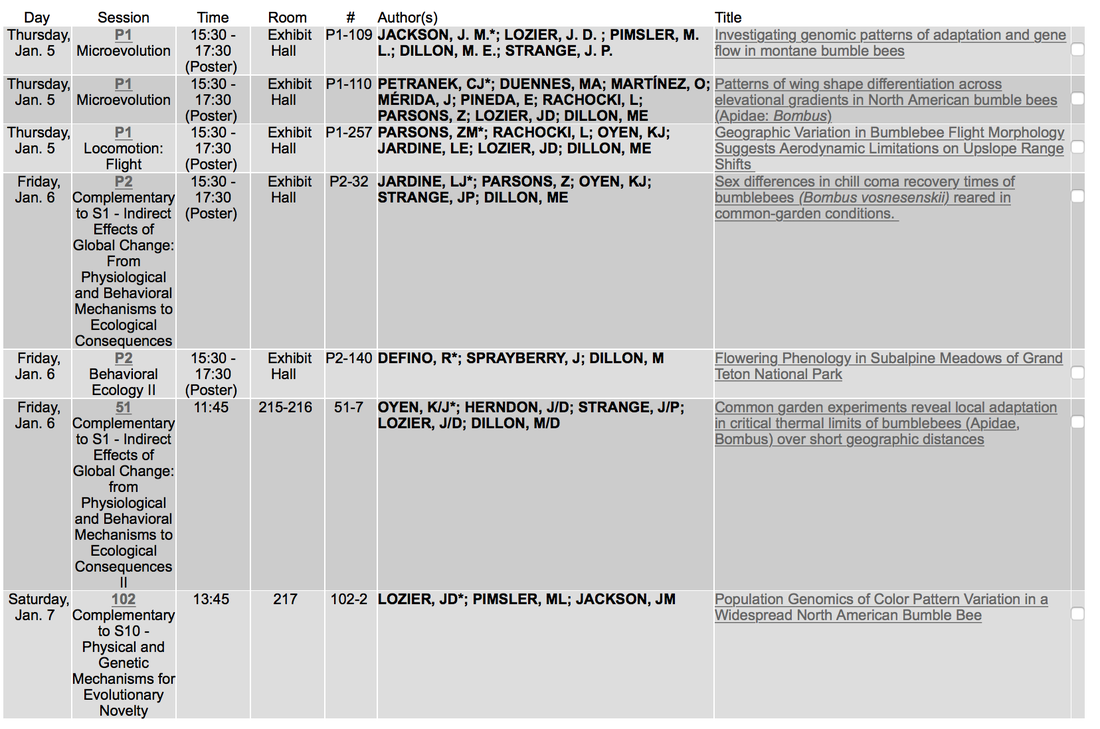
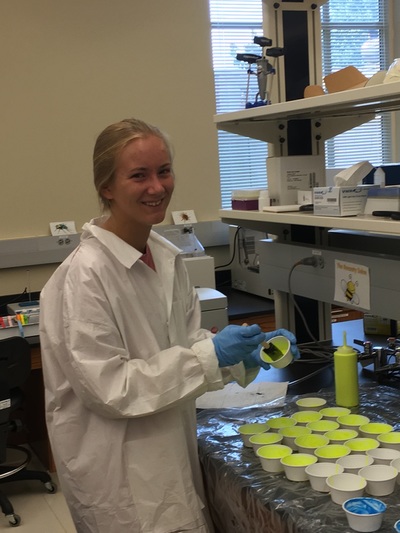
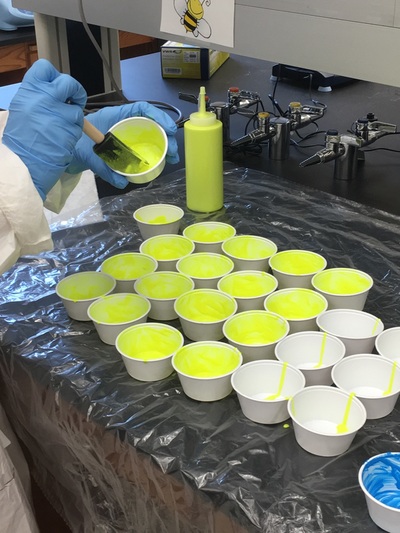
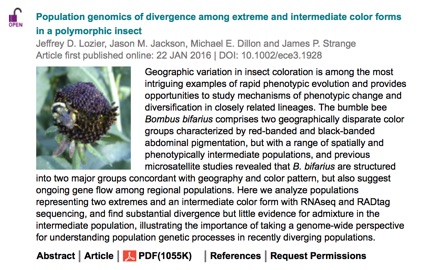
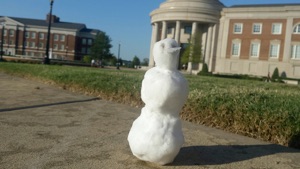

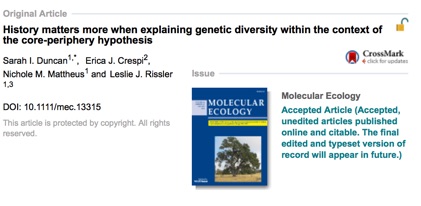
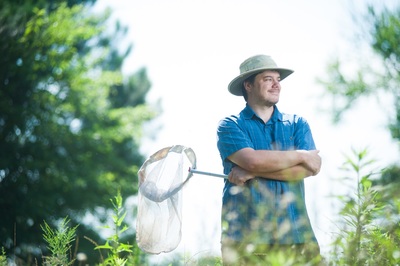
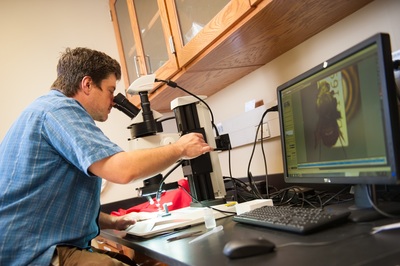
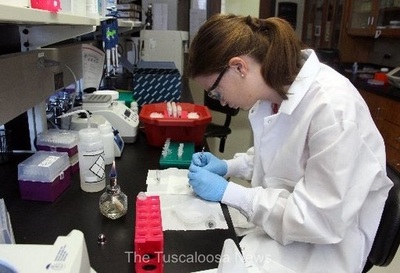
 RSS Feed
RSS Feed